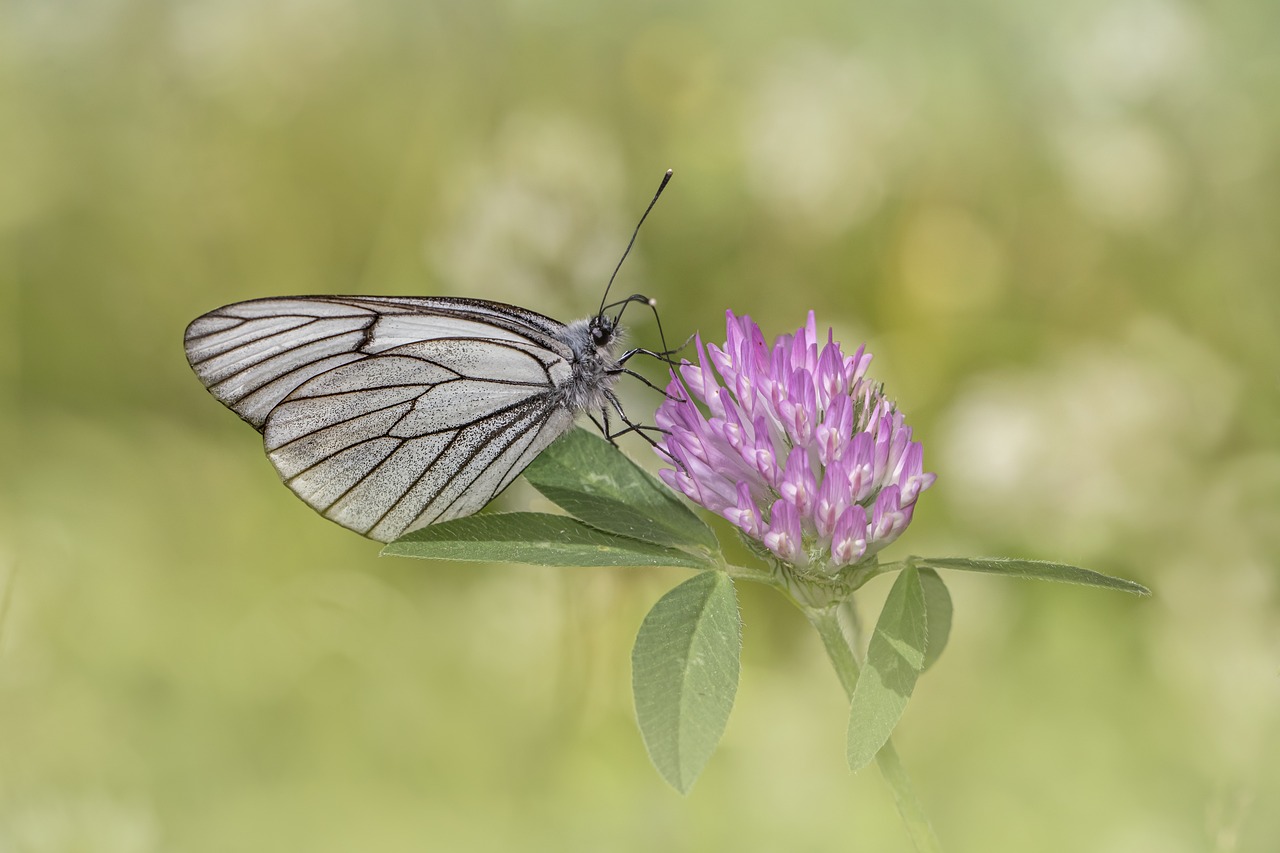The Black-veined White (Aporia crataegi) is a striking butterfly species known for its distinctive appearance and interesting behaviors. Here are some key details about this butterfly:
Appearance
- Size: The Black-veined White has a wingspan of approximately 55-70 mm (2.2-2.8 inches).
- Coloration: As its name suggests, the butterfly has white wings with prominent black veins. The wings are translucent, giving them a delicate appearance. The body is also black, creating a striking contrast with the white wings.
Habitat
- Range: This species is found across Europe, North Africa, and temperate Asia, extending from the British Isles to Japan.
- Environment: The Black-veined White prefers open landscapes such as meadows, orchards, gardens, and forest edges where its host plants, primarily fruit trees, are abundant.
Behavior
- Flight Period: Adults are typically on the wing from May to July, depending on the climate and location. There is usually one generation per year.
- Diet: Adults feed on nectar from a variety of flowering plants, including clover, thistles, and knapweed. The caterpillars feed on the leaves of various fruit trees, such as hawthorn, apple, pear, and cherry.
Life Cycle
- Reproduction: Females lay their eggs in clusters on the leaves of host plants. Each cluster can contain up to 100 eggs.
- Larvae: The caterpillars hatch and feed on the leaves of the host plant. They are gregarious, meaning they live and feed in groups. They overwinter as caterpillars in communal silk nests attached to twigs and resume feeding in the spring.
- Pupation: Pupation occurs in the spring, with the chrysalis typically attached to a plant stem or leaf. After a few weeks, the adult butterfly emerges.
Adaptations
- Camouflage and Defense: The black veining on their white wings helps break up their outline, making it harder for predators to spot them. The larvae’s communal silk nests provide protection during the winter months.
- Thermoregulation: Their white wings help reflect sunlight, preventing overheating while basking in the sun, which is crucial for their thermoregulation.
Ecological Role
- Pollination: As adults feed on nectar, they act as pollinators for various wildflowers and garden plants.
- Food Source: They serve as prey for a range of predators, including birds, mammals, and other insects, playing a role in the food web.
Conservation
- Status: The Black-veined White butterfly is not currently considered endangered, but its populations have seen declines in some areas, particularly in Western Europe.
- Threats: Habitat loss, pesticide use, and climate change are major threats to their populations. The decline of traditional orchards and hedgerows has also negatively impacted their habitats.
- Conservation Efforts: Efforts to conserve this species include preserving and restoring their natural habitats, promoting organic farming, and planting host and nectar plants in gardens and orchards.
The Black-veined White butterfly is an important species within its ecosystem, contributing to pollination and serving as a food source for other wildlife. Its presence indicates a healthy environment, and efforts to protect its habitats benefit numerous other species as well.
Visited 183 times, 34 visit(s) today
Views: 363
Subscribe to the newsletter:
